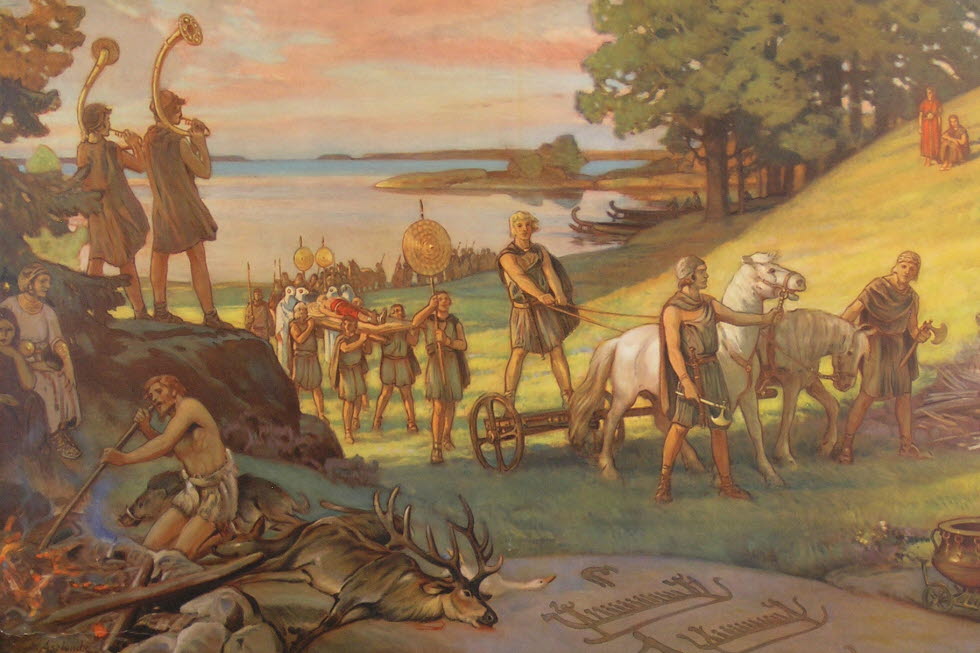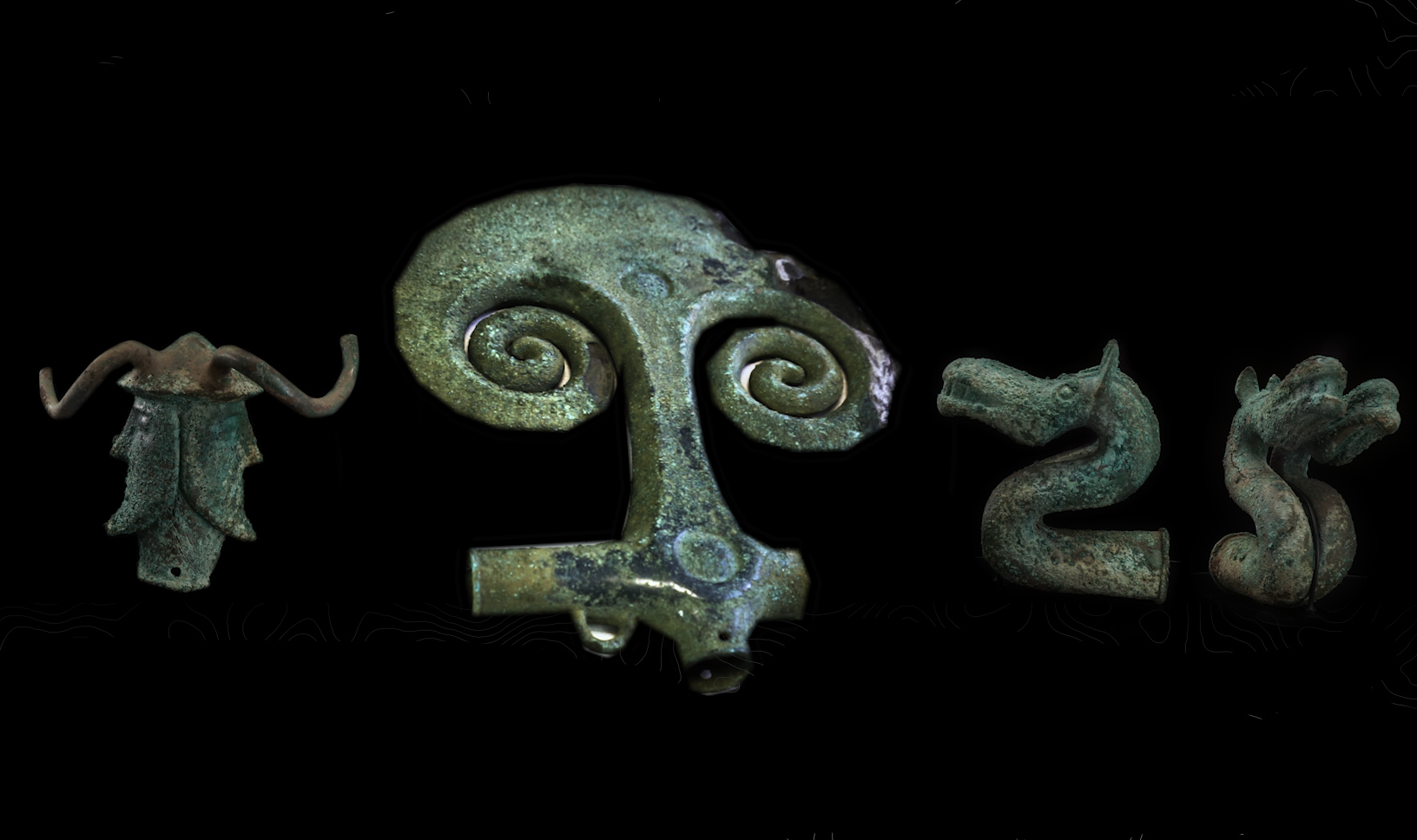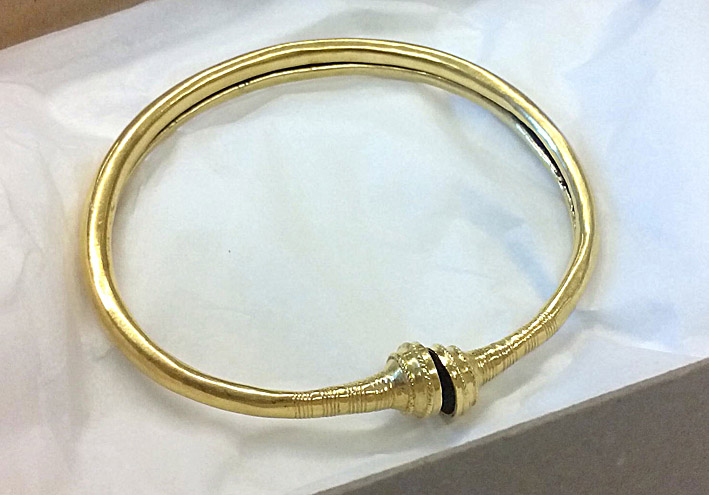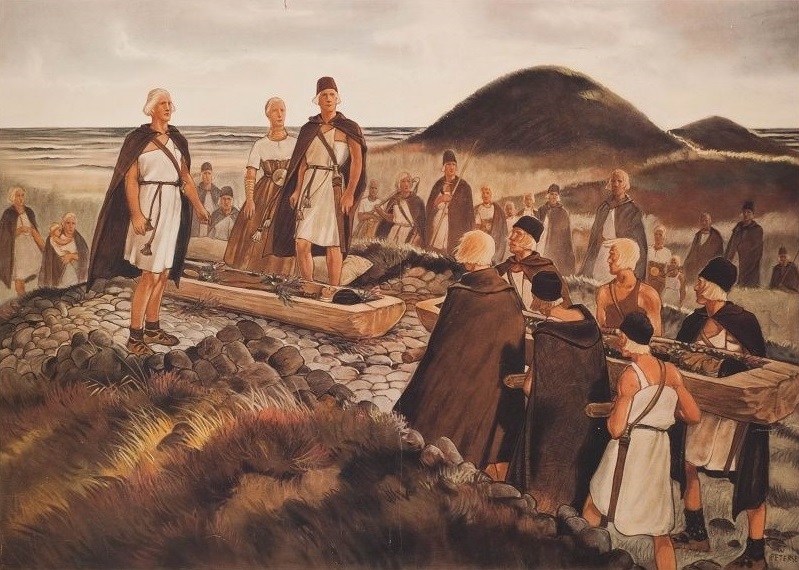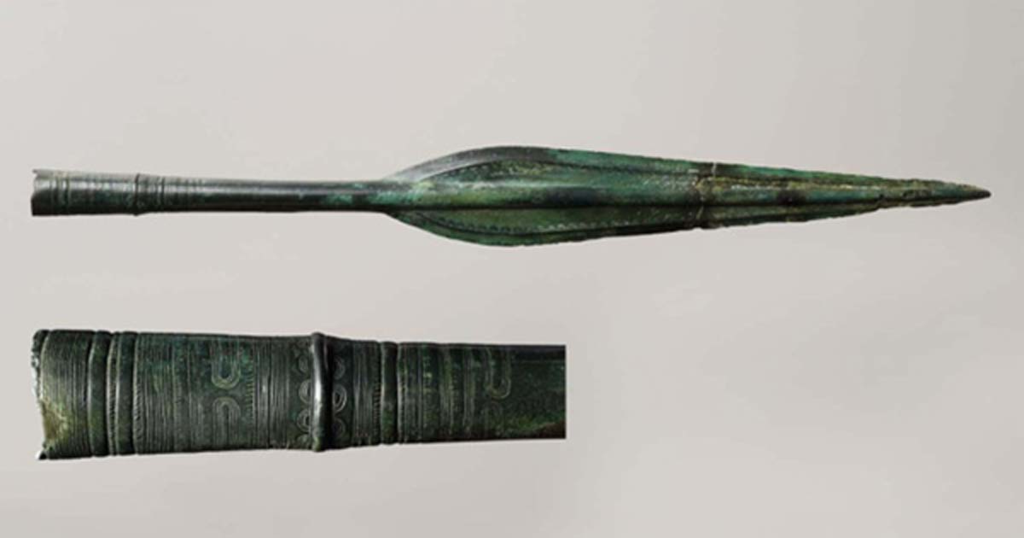Nordic Bronze Age
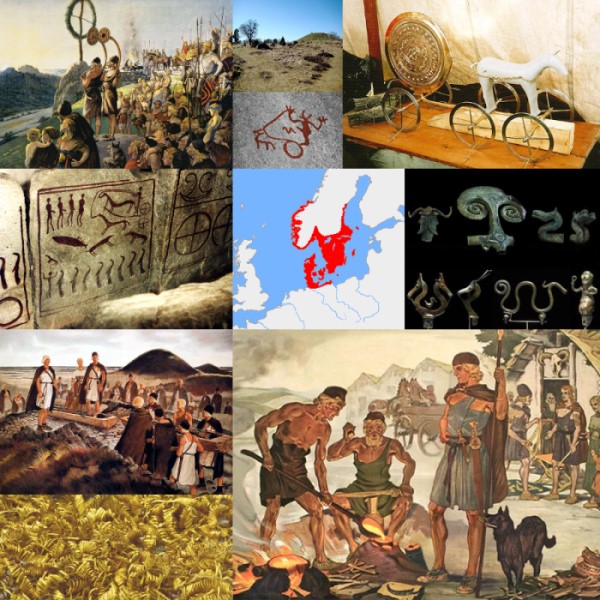
This culture existed from 1700 BC to 500 BC in the territory of what is modern day Norway, Denmark and Sweden. The Nordic Bronze Age (Scandinavian Bronze Age, Northern Bronze Age) had close contacts with Lusatian, Hallstatt and La Tène cultures. This culture was entirely pre-urban, with people living in hamlets and on farmsteads with single-story wooden long-houses.
The Nordic Bronze Age emerged circa 1700 BC as a continuation of the Battle Axe Culture (the Scandinavian Corded Ware variant which was a fusion of the Corded Ware and Funnelbeaker cultures) as well as from the influence that was coming from the Central Europe since 2300 BC (Unetice Culture). 90% of all burials in the territory of late Funnelbeaker Culture in Jutland belonged to young men, who were probably a part of Koryos Army. It was part of the colonisation from the early Single Grave – Corded Ware Culture.
The people of the Nordic Bronze Age were actively engaged in the export of amber and imported metals in return. They became expert metalworkers. Copper mining was never tried locally during this period and Scandinavia has no deposits of tin, so all metal had to be imported though it was largely cast into local bronze designs on arrival. Iron production began locally ca. 500 BC and most probably as a kind of trade secret among bronze casters. Iron was almost exclusively used for tools to make bronze objects.
The Northern Bronze Age was characterized by a warm climate that began with a climatic change around 2700 BC and was comparable to modern climate of Central Germany and Northern France. Thanks to this climate the population density was quite high and agriculture flourished, in particular, grapes were grown in Scandinavia at this time. However, a slight cold snap between 850 BC and 760 BC, and also more significant about 650 BC led to a decline of local economy. The climate became more humid and colder, perhaps this cold snap is the source of the Fimbulwinter legend.
The Nordic Bronze Age is often considered ancestral to Germanic peoples. About 1750 BC three things happened at the same time: bronze from the Mediterranean appeared in Scandinavia, amber from the Baltic (probably Ravlunda) started to appear in masses in Mycenaean graves and pictures of huge ships started to be cut into the bedrock and onto bronze objects in Scandinavia[1].
The breakthrough of the Nordic Bronze Age (NBA) circa 1600 BC as a koiné within Bronze Age Europe can be historically linked to the Carpathian Basin. In Southern Scandinavia, weaponry radiated momentous creativity that drew upon Carpathian originals, contacts and a pool of Carpathian ideas, but ultimately drawing on emergent Mycenaean hegemonies in the Aegean. This provided the incentive for a cosmology-rooted resource from which the Nordic Bronze Age (NBA) could take its starting point[2].
DNA
In a study from June 2015, the remains of nine individuals of the Nordic Bronze Age and earlier Neolithic cultures in Denmark and Sweden from 2850 BC to 500 BC were analyzed. Among the Neolithic individuals three males were found to be carrying haplogroup I1, R1a1a1 (R1a-M417) and R1b1a1a2a1a1 (R1b-U106). Among the individuals from the Nordic Bronze Age two males carried I1, while two carried R1b1a1a2 (R1b-M269). Those R1b haplogroups most probably did not come from the Bell Beaker Culture but from Unetice Culture or straight from the Southern Yamnaya Pastroalists. R1b1a1a2a2 was found among two males from the Poltavka Culture, the successor of the Yamnaya Culture in the East.
According to recent genetic analysis, both mtDNA (mitochondrial DNA) and Y chromosome polymorphisms showed a noticeable genetic affinity between the Norwegian population and other ethnic groups in Northern and Central Europe, particularly with Germans. This is due to a history of at least a thousand years of large-scale migrations both in and out of Norway. The Norwegian population is typical of the Northern European population with Haplogroup I1 (Scandinavian Hunter-Gatherer) being the most common Y-haplogroup at about 37.3%. Norwegians also show the characteristic R1a genes of the paternal ancestorship at about 17.9% to 30.8%. Such large frequencies of R1a have been found only in Eastern Europe and India. R1b gene showing paternal descent is also widespread at about 25.9% to 30.8%.
Most extant R1a-Z284 haplogroup subclades were probably associated with the expansion of the Corded Ware (Battle Axe) Culture (2800 BC - 1800 BC) from the Northern Forest-Steppe in the Yamna homeland to Scandinavia and later with the expansion of Vikings to Iceland in the 9th century AD. The Corded Ware expansion was the first wave of R1a into Europe, the one that also brought the R1a-Z283 subclade to Germany and Netherlands. The genetically closest haplogroup to R1a-Z284 is R1a-Z282 and it is most prevalent among the Poles, Lithuanians, Latvians, Belarusians and Russians (Balto-Slavs). The Y-SNP branch R1a-Z284 is defined by S221. Additionaly, all downstream markers L448, S200, S223, S345, Z287, Z288 are defining this branch as well. Nowadays 25% of males in Norway carry the R1a-Z284 haplogroup.
This haplogroup is in the same genetic link and group as Vedic and Fatyanovo-Balanovo R1a-Z93, central Slavic R1a-M458 (Poland, Czech, Slovakia) and Balto-Slavic R1a-Z280. That is why in the vocabulary section we will mainly compare the Satem Indo-European languages to Scandinavian languages to find the original paternal R1a-Z284 words (probably from around 3000 BC and having their origins in the Corded Ware Culture). All those haplogroups above descended from the R1a-Z282 subclade in Europe, while the R1a-Z93 is a sibling of R1a-Z283 subclade that separated about 3500 BC, so the departure towards Fatyanovo-Balanovo must have taken place around 3000 BC. It means that all Germanic and Balto-Slavic cognates (words) in common with Sanskrit are at least 5000 years old and almost did not change their form in all those many, many years. The Baltic branch and Proto-East-Slavic stayed in contact for the longest time with the Fatyanovo-Balanovo Proto-Indo-Aryans.
The Corded Ware R1a people would have mixed with the pre-Germanic I1 and I2 Hunter-Gatherers, which resulted in the first Indo-European culture in Germany and Scandinavia. Although that culture could not be considered Proto-Germanic, it was simply Proto-Indo-European at that stage or perhaps Proto-Balto-Slavic[1].
Almost 30% of R1b in Norway and Scandinavia can be "seen" through the Celtic and Italic or rather Unetice Culture influence and those words will also be marked as Centum in origin with zero parallels in R1a languages. The essence of a language spoken during the Nordic Bronze Age can be brought up this way. Unetice can be seen as the source of future Germanic, Celtic and Italic cultures and is associated mainly with the L11 subclade of R1b. The late Unetice Culture expanded to Scandinavia, founding the Nordic Bronze Age around 1700 BC. R1a-L664, R1b-L11, R1b-U106 (from R1b-L151 and brotherly to Italian R1b-U152) presumably reached Scandinavia around this time. For over thousand years while this culture existed, the Proto-Germanic R1b and R1a-L664 tribes would have acquired vocabulary from the pre-existing Corded Ware population, which was itself a blend of Proto-Balto-Slavic languages (linked to haplogroup R1a-Z284) and languages of non-Indo-European origin (linked to haplogroups G2a, I1 and I2). The Nordic Bronze Age was a melting pot of these three populations, which intermingled both genetically and linguistically, little by little creating a new ethnicity and culture as time went by.
In Scandinavia the transition from the preceding Neolithic period Hunther-Gatherer societies was rapid and represents a dramatic termination of Hunther-Gatherer traditions. It has been argued that the transformation is tied to initial migrations of people to the Western coast of Norway from Bell Beaker Culture areas, possibly from Northern Jutland around 2800 BC.
It was found that the peoples of the Corded Ware Culture, Bell Beaker Culture, Unetice Culture and Nordic Bronze Age were genetically very similar to one another and displayed a significant amount of genetic affinity with the Yamnaya Culture.
Gallery Of Artifacts
Vocabulary
The earliest example of a sentence in a Germanic language is a runic inscription from Gallehus horn from around 450 AD found in Denmark: Ek Hleuagastiz Holtijaz Horna Tauido. It translates to "I Hlewagast of Holt horn made".
Let's first try to find words that appear only in the Germanic and Indo-Aryan or Greek groups, excluding Slavic, Baltic and Romance languages. By doing so we can establish the earliest possible forms that were in contact already on the plains of R1a people near the Carpathian Mountains (from the times of R1a1a1b, R1a-Z283 and R1a-Z93 around 3500 BC). It is most probably a group of R1a-Z284 people (descended from the Balto-Slavic R1a-Z282) or R1a-Z283 itself that brought those words to Scandinavia:
- a fly: mukka, mugga, myg
- Greek: μύγα (mýga)
- Tajik: магас (magas)
- Persian: مگس (magas)
- Sanskrit: मक्षिका (mákṣikā)
- Hindi: मक्खी (makkhī)
This form with Centum "G" or "K" instead of usual "H" appears only in the Germanic group, in total oposition to the Grimm's Law, most probably from *mukha. This would mean that the Grimm's Law occured only after the year 2000 BC, maybe after the arrival of Unetice Culture R1b and R1a-L664.
- one: ēn, en, ein
- Sanskrit: एन (éna)
- full: fol, vol, fullr, fullur, 𐍆𐌿𐌻𐌻𐍃 (fulls) (from *pul)
- Sanskrit: पूर्ण (pūrṇá)
- Hindi: पूरा (pūrā)
- Khotanese: (purrä)
- Belarusian: по́ўны (póŭny)
- Polish: pełny
- Lithuanian: pilnas
- Latin: plēnus
- Umbrian: plener
This word confirms that R1a-Z284 people were linguistically closest to the Indo-Aryan R1a-Z93 branch and that this word around 3000 BC was "pūlna" with almost 100% certainty. It also proves the theory that Grimm's Law could occur around 2000 BC, because that would still be 1500 years of development from "pullna" to "fullna" to "full".
- pyre, fire: fyr, fiur, Feuer, funi, foni, 𐍆𐍉𐌽 (fōn)
- Ancient Greek: πῦρ (pûr)
- Old Armenian: հուր (hur)
- Hittite: 𒉺𒄴𒄯 (paḫḫur)
- Luwian: 𒉺𒀀𒄷𒌋𒌨 (pāhūr)
- Polish: pożar
- Tocharian B: puwar
- Albanian: pishtar ("torch")
- Ancient Greek: πανός (panós) ("torch")
- Old Prussian: panno
- Polish: perzyna ("embers after fire")
- miller: Muller, myllare
- Ancient Greek: μύλη (múlē)
- Albanian: mullixhi
- law, right: 𐍄𐌰𐌹𐌷𐍃𐍅𐌰 (taihswa), zeso
- Lithuanian: teisė ("law")
- Umbrian: 𐌈𐌄𐌔𐌅𐌀𐌌 (tesvam)
- Latvian: tiesības ("law")
- Sanskrit: दक्षिण (dákṣina) ("right")
- Avestan: dašina ("right")
- Old Irish: dess ("right")
- Old Church Slavonic: деснъ (desnŭ) ("right")
- Bulgarian: де́сен (désen) ("right")
- Lithuanian: dešinys ("right")
- Ossetian: дӕсни (dæsni) ("dexterous")
- Latin: dexter ("right")
- Albanian: djathtë ("right")
- thief: 𐌷𐌻𐌹𐍆𐍄𐌿𐍃 (hliftus) (from *kliptus or *kleptus), 𐌷𐌻𐌹𐍆𐌰𐌽 (hlifan)
- Ancient Greek: κλέπτης (kléptēs)
- Greek: κλέφτης (kléftis)
- Polish: zaklepane ("taken")
- Oscan: 𐌊𐌖𐌋𐌖𐌐𐌖 (kulupu)
- Old Norse: klappa ("clap")
- Croatian: lopov
- Welsh: lleidr, lladron
- Polish: łotr
- Sanskrit: विलोप्तृ (viloptr)
- *Basque: lapurna
There is an interesting connection here with a Norse word "Loptr". It is Loki's other name, who was connected to loops and locks (maybe he helped in unlocking them). In the Galician language there is a word "louco (louko)" and in Spanish "loco", both meaning "crazy". His original name "Loki" could then be connected to someone "Insane" or "Evil-Mad". Most probably all three names originated in the vocabulary of Early European Farmers or European Hunter-Gatherers. In the Basque language a name for someone crazy is "zoro", so if we consider it to be the Early European Farmer word then "loki" would then be the name from the Hunter-Gatherer (Y-DNA I) vocabulary. He was not an Aesir nor a Vanir but a god connected to the Giants (probably forces of nature) and those beings very often appear in the religions connected to the Hunter-Gatherer societies.
- black grouse: þiðurr, tiur, työðer, tjäder
- Sanskrit: तित्तिर (tittira)
- Assamese: তিতৰ (titor) ("partridge")
- Hindi: तीतर (tītar) ("partridge")
- Polish: cietrzew (from earlier *tietreu)
- Lithuanian: tetervinas, tetervà
- Old Prussian: tatarwis
- Latin: tetrix
- Kashubian: cetrzéw (*tetreu)
- Czech: tetřev
- Slovakian: tetrov
- Ukrainian: тетерук (teteruk)
- Irish: tethra
- Ancient Greek: τετράων (tetráōn)
- Serbo-Croatian: tetrijeb
- Old Armenian: տատրակ (tatrak) ("Streptopelia turtur")
Most probably the original "E" sound in this word was closer to soft "IE" or "I" from *tieter or *titrev in the times of the R1a-Z284 separation. In general the soft "ti" would be similar to Slavic "ci".
- eagle: 𐌰𐍂𐌰 (ara), aro, arn, aar, arend, ari, ann, Aar, ærn / ǫrn, örn, ørn / ern, earn, erne
- Old Armenian: արծուի (arcui)
- Belarusian: аро́л (aról)
- *Basque: arrano
- *Chechen: аьрзу (ärzu)
- *Georgian: არწივი (arc̣ivi)
- Ossetian: арцъиу (arc’iw)
- Hittite: 𒄩𒀀𒊏𒀸 (ḫāras)
- Lithuanian: aras, erelis
- Old Prussian: arelie
- Old Church Slavonic: орьлъ (orĭlŭ)
- Czech: orel
- Albanian: orr
- Ancient Greek: ὄρνῑς (órnīs), ὄρνῑξ (órnīx) ("bird, chicken")
- Breton: erer
This word might be of European Hunter-Gatherer origin. There is zero connection to Sami or Turkish languages. There was a Great Eagle living on top of the Mighty Yggdrasil in Norse religion, this would be surely an Indo-European feature (maybe Odin or Thor himself). There is a magnificent artwork by Howard David Johnson that portrays this unnamed Eagle (Orn).
- why (hwȳ, huy): hví, kvi (from *kui)
- Latin: cuius (whose?)
- Polish: po kiego huia (why?)
- Armenian: խի (hi)
- Old Armenian: հիմ (him)
- Sanskrit: किम् (kim)
- Polish: czemu (*kimu)
- Assamese: কিয় (kiy)
- Spanish: por qué
- Shina: kye
- white: hwīt, hvítr, huit, 𐍈𐌴𐌹𐍄𐍃 (ƕeits)
- Sanskrit: श्वित्र (śvitra), श्वेत (śveta)
- Avestan: spaēta
- Belarusian: свет (svjet)
- Polish: światły
- Lower Sorbian: swět
- Russian: цвет (cvet) ("bright color")
- Lithuanian: švìsti ("to shine")
- son: 𐍃𐌿𐌽𐌿𐍃 (sunus), sunu, ᛋᚢᚾᛅᛦ (sunar), sun
- Lithuanian: sūnus
- Sanskrit: सूनु (sūnú)
- Old Church Slavonic: сꙑнъ ⱄⱏⰺⱀⱏ (synŭ)
- Albanian: çun
- Avestan: hunu, hūnuš
- Tocharian B: soṃśke
- heart: herte, Herz, hjerte, 𐌷𐌰𐌹𐍂𐍄𐍉 (hairtō), hart, hjarta (from *kert)
- Sanskrit: हृद् (hṛ́d)
- Hittite: ker
- Ancient Greek: κῆρ (kêr)
- Tocharian B: käryāñ (keriani)
- Russian: се́рдце (sérdce)
- Avestan: zərəd
- Ancient Greek: καρδία (kardía)
- Luwian: UZU-zārza, za-ra/i-za
- Bulgarian: сърце (sǎrce)
- helm: helma, 𐌷𐌹𐌻𐌼𐍃 (hilms), Holm, halme, halm, hjalm
- Sanskrit: शर्मन् (śárman, from *śalman) ("protection")
- Lithuanian: šalmas
- Armenian: սաղավարտ (sałavart)
- Belarusian: шало́м (šalóm)
- Old Polish: szłom
- Old Church Slavonic: шлѣмъ (šlěmŭ)
- Bulgarian: шлем (šlem)
A word from 3500 BC could be reconstructed as "šalman" in neutrum form and in this case it would mean that S turned to H in Proto-Germanic.
- table: stōl, stool, stul, stoel, Stuhl, stoll, stolur, støl, 𐍃𐍄𐍉𐌻𐍃 (stōls)
- Sanskrit: स्थलम् (sthalam) ("firm ground, foundation")
- Lithuanian: stãlas
- Old Prussian: stallan
- Russian: стол (stol)
- Czech: stůl
- Albanian: stol
- foot: fótr, fotur, fod, 𐍆𐍉𐍄𐌿𐍃 (fotus), fot (from *pod)
- Greek: πόδι (pódi)
- Phrygian: ποδας (podas)
- Sanskrit: पद् (pád), पात् (pā́t)
- Avestan: paδa, pāδa
- Lithuanian: pėda
- Old Church Slavonic: пѧта (pęta) ("heel")
- man: maðr, mann, 𐌼𐌰𐌽𐌽𐌰 (manna)
- Sanskrit: मनु (mánu)
- Avestan: manuš
- Bulgarian: мъж (mǎž)
- sew: siwian, sýja, suwen, 𐍃𐌹𐌿𐌾𐌰𐌽 (siujan), siuwian
- Sanskrit: सीव्यति (sī́vyati)
- Bulgarian: ши́я (šíja)
- Old Prussian: schuwikis (šuwikis) ("tailor")
- Lithuanian: siuvìkas, siuvikis
- Latin: suō ("join, fasten together")
- Lithuanian: siūti
- Latin: sūtor ("shoemaker")
- Finnish: suutari ("shoemaker")
This word appears only in the Germanic, Balto-Slavic and Indo-Aryan languages and is surely R1a-Z283 in origin
- queen: kuna, kun, kvinna, kvæn, 𐌵𐌴𐌽𐍃 (qēns), kona
- Mycenaean Greek: ku-na-ja
- Phrygian: knaika
- Old Armenian: կին (kin)
- Old Avestan: gənā
- Sanskrit: ग्ना (gnā́)
- Old Church Slavonic: жена ⰶⰵⱀⰰ (žena)
- fingernail, nail: nagl, nagel, nögl, negl, næġl
- Romansch: ungla
- Sinhalese: ඇඟිලි (æⁿgili)
- Old Prussian: naguttis
- Lithuanian: nagas, nagutis, nagelis
- Sanskrit: नख (nakha)
- Baluchi: ناکن (nákun)
- Old Church Slavonic: ногъть (nogŭtĭ)
- Bulgarian: но́кът (nókǎt)
- Latgalian: nogs
- Old Polish: nogieć (now in paznokieć)
- Ossetian: ных (nuh, nyh)
- Persian: ناخن (nâhon)
The "L" at the end of this word is present only in Romansch and Romanian, an interesting connection to Daco-Thracian R1a-Z280.
- mist, gloom: miggelen, mistr, glōm
- Russian: мгла (mgla)
- Old Church Slavonic: мьгла ⰿⱐⰳⰾⰰ (mĭgla)
- Lithuanian: migla
- Latvian: migla
- Sanskrit: मिह् (míh)
- Old Armenian: մէգ (mēg)
- suppose, think: 𐌼𐌿𐌽𐌰𐌽 (munan), munu, mune, mun, muninn, monen, mona, maun
- Sanskrit: मानयति (mānayati)
- Lithuanian: manyti
- Old Czech: mnieti
- Old East Slavic: мьнѣти (mĭněti), мьнити (mĭniti)
- Romanian: aminti
- Latvian: minêt
- Lithuanian: minė́ti
- Ancient Greek: μέμονα (mémona)
- Latin: meminī
Now a list of words common with mostly Slavic languages (R1a-M458 descended from R1a-Z282 around 2500 BC and at the same time as R1a-Z284 from R1a-Z282):
- small: smalr, smæl, 𐍃𐌼𐌰𐌻𐍃 (smals), smel
- Old Church Slavonic: малъ (malŭ)
- Czech: malý
- Russian: ма́лый (mályj)
This word is only present in Slavic and Germanic, maybe in Latin as malus ("diminished", "bad")
- corpse: lik, like, lich
- Old Church Slavonic: лихъ (lihŭ)
- Bulgarian: лешояд (lešojad) ("corpse-carrion eater" - "vulture")
- Persian: لاش (lâš) ("corpse")
- Polish: licho ("a ghost from the woods")
- Polish: lichy (lihy, likhy, "weak")
- Czech: lichý ("not in pair", "wrong")
- be: bith, biþ, byþ, bēon
- Croatian: biti
- Lithuanian: būti
- Latvian: būt
- Russian: быть (byt')
- Polish: być
- Belarusian: быць (byc)
- Breton: bezañ
- thank: þanc, danke, takk, thonk, þǫkk
- Slovak: ďakovať
- Polish: dziękować (d'enkovati)
- Czech: děkovat
- Lithuanian: dėkoju, dėkui
- swine: svin, Schwein
- Old Church Slavonic: свиниꙗ (svinija)
- Russian: свинья́ (svinʹjá)
- Polish: świnia
- provoke, anger: gremian, gremen, gremja, gräma, græmme, 𐌲𐍂𐌰𐌼𐌾𐌰𐌽 (gramjan)
- Russian: греме́ть (gremétʹ)
- Old Church Slavonic: грьмѣти (grĭměti)
- Polish: grzmieć ("make loud noise")
- furious, hostile: gram, gramur, gremi
- Ancient Greek: χρόμος (khrómos) ("crashing sound")
- Old Church Slavonic: громъ ⰳⱃⱁⰿⱏ (gromŭ) ("thunder")
- Polish: grom ("thunder")
- Serbo-Croatian: гро̑м, grȏm
- Russian: гром (grom)
- fermented drink: kvassir
- Polish: kwas ("acid")
- Serbo-Croatian: ква̑с, kvȃs
- year: jār, jaar, Jahr
- Avestan: yārə
- Rusyn: ярь (jarʹ)
- Slovene: jȃr
- part of something, portion, deal: 𐌳𐌰𐌹𐌻𐍃 (dails), dǣl, deil, teil, deila, 𐌳𐌰𐌹𐌻𐌰 (daila)
- Lithuanian: dails
- Polish: dział
- Bulgarian: дял (djal)
- Old Church Slavonic: дѣлити (děliti)
- Russian: дел (del)
- Old Czech: diel
- to tell lies: ljúga, 𐌻𐌹𐌿𐌲𐌰𐌽 (liugan), lyga, lyġe, Lug, lúgva
- Old Church Slavonic: лъгати ⰾⱏⰳⰰⱅⰹ (lŭgati)
- Old Polish: lugać
Baltic does not have a cognate here.
- darkness: mirc, mirk, murk, myrkr, mørk (also in Mirkwood)
- Belarusian: мо́рак (mórak)
- Russian: мо́рок (mórok)
- Ukrainian: мо́рок (mórok)
- Polish: mrok
- Albanian: murg
- soul: sjel, siele, sjæl
- Lithuanian: siela
- Old Prussian: seilin ("diligence")
- Polish: siła ("strength, force")
- big, fat: stōr, stórr, stor
- Lithuanian: storas
- Northern Sami: stuoris
- Southern Sami: stueries
- heap, pile, mound: hēap, hepe, heep, heip, hāp, hoop, houp, houf, houf, houpe, hópr (from *kops, *koup, *kap, *keep)
- Polish: kopiec ("heap, mound, kurgan")
- Lithuanian: kapas ("grave"), kapines ("graves" = "the heaps")
- Polish: kupa ("pile")
- Polish: kaupas ("pile")
- Old Church Slavonic: коупъ ⰽⱆⱂⱏ (kupŭ) ("mound")
- Bulgarian: куп (kup)
- --> Finnish: keko, kasa
This could be the same case as with the formation of "hemp", "hanap" in Germanic from an earlier "kenp" or "kanap".
- king: kuning, konungr, konge
- Old Church Slavonic: кънѧѕь (kŭnędzĭ)
- Lithuanian: kunigas, kuningas
- Estonian: kuningas
- Veps: kunigaz
In Slavic languages from earlier form *kuneng *kuning, it is not a borrowing from Germanic.
- yeast, sediment: dregg, dregs, dreggjar, gær
- Latvian: raugs
- Belarusian: дро́жджы (dróždžy)
- Old Church Slavonic: дрождиѩ (droždiję)
- Lower Sorbian: droždźeje
- Romanian: drojdie
This is another proof that "dz" or "żdż" in Slavic is from the earlier "g" (like in "giant") and "кънѧѕь (kŭnędzĭ)" comes from a common cognate word and can not be a loanword from Germanic.
- thousand: þúsund, thusund, thusent, thusend, tusen, tausend
- Old Church Slavonic: тꙑсѫщи ⱅⱏⰹⱄⱘⱋⰻ (tysǫšti), тꙑсѧщи ⱅⱏⰹⱄⱔⱋⰻ (tysęšti)
- Polish: tysiąc
- Polish: tuzin ("many", "twelve")
- Lithuanian: tūkstantis
A proof that there once there were nasal sounds in Germanic just like in Baltic and Slavic. This word is not attestend in any other branches of Indo-European languages.
- friendly troop: druhtinaz, dryht, 𐌲𐌰𐌳𐍂𐌰𐌿𐌷𐍄𐍃 (ga+drauhts), druht, drucht, drohtin, druhtin, drott
- Polish: druh
- Czech: druh
- Slovak: druh
- Lower Sorbian: drug
- Old Church Slavonic: дроугъ (drugŭ)
- Russian: друг (drug)
- Serbo-Croatian: дру̑г, drȗg
- Lithuanian: draugas
- Finnish: ruhtinas
- Latvian: draugs
- need: 𐌽𐌰𐌿𐌸𐍃 (nauþs), naudi (in Proto-Germanic naudigastiz)
- Old Church Slavonic: ноужда (nužda, noužda, similar to *nauždi)
- Bulgarian: ну́жда (núžda)
- Belarusian: ну́жа (núža)
- Persian: نیاز (niyâz)
Germanic and Balto-Slavic share endings of plural Dative and Instrumental cases: both use-mos and -mis, while the rest of Indo-European languages use the derivative of -bhi̯os and-bhis, for example -bus in Latin.
The Dative case is the same in Germanic and Balto-Slavic and in plural ends with -om,-am, for example the phrase "for wolves" in Gothic is: wulfam, in Polish: wilkom and in Lithuanian: vilkam. Those branches also lack the Ablativus case present in Latin, Sanskrit and Avestan. Only Old English, Old Saxon, Old High German, Georgian, Armenian, Basque, Sanskrit, and Balto-Slavic languages have the Instrumentalis case that is used to indicate that a noun is the instrument or means by or with which the subject achieves or accomplishes an action.
In Italo-Celtic the formation of superlatives reflexes the suffix -ism̥mo-. In Latin: fortis, fortissimus ("strong, strongest"), Old Irish: sen, sinem ("old, oldest"), Oscan: mais, maimas ("more, most"), Lithuanian: didys, didesnis ("big, bigger"). Branches outside Italic, Celtic and Lithuanian instead derive superlatives with reflexes of -isto-.
In Sanskrit: urús, váriṣṭhas ("broad, broadest"), Ancient Greek: καλός (kalos), κάλλιστος (kallistos) ("beautiful, fairest"), Gothic: 𐌼𐌰𐌽𐌰𐌲𐍃 (manags), 𐌼𐌰𐌽𐌰𐌲𐌹𐍃𐍄𐍃 (managists) ("many, more"), English: great, greatest, Polish: piękny, piękniejszy ("beautiful, more beautiful"), Old Norse: rauðr, rauðastr ("red, reddest"), Latvian: mazs, mazāks ("small, smaller").
Words common only with R1b Italo-Celtic (Unetice Culture and Bell Beaker Culture):
- fish: fisk (from *pisk or *piš)
- Sardinian: pische (piske)
- Cornish: pysk
- Latin: pisces (piskes)
- Breton: pesk
- *Comanche (North America): pekwi
- Spanish: pez
- Romansch: pesch
- Venetian: pese
- Romanian: pește
- Welsh: pysgodyn
- *Ubykh (Northwest Caucasian): psa
- Greek: ψάρι (psári)
- *Old Tupi (Brazil): pirá
- leather: leþer, ledder, lethar, leer, Leder, leðr, lær, läder, ler
- Old Irish: lethar
- Breton: lêr
- Manx: lhiare, liare
- Latin: alūta
- Albanian: lëkurë
- Latvian: āda (maybe lada)
- male goat, buck: hæfer, hafr, havur (from *kapr or *kaper)
- Latin: caper (kaper)
- *Estonian: kaber, kabris
- *Karelian: kapris
- Umbrian: 𐌊𐌀𐌐𐌓𐌖𐌌 (kaprum)
- *Livonian: ka’bbõr
- Old Breton: gabr
- Cornish: gaver
- Old Irish: gabor
- Ancient Greek: κάπρος (kápros) ("boar")
- Polish: Kaper, Kapierz, Kabiesz, Kopierz, Kobierzyn (surnames and placenames)
The proposed loan from Germanic into Finnic languages is simply impossible. It is either a substratum Corded Ware Culture word or the proposed R1b Southern Yamnaya influence in that culture.
- let: laten, lassen, leyfa, la
- Lusitanian Celtic: litom
- Venetian: lasar
- Latvian: ļaut, laist
- Albanian: lë
- Breton: lezel
- Lithuanian: leisti
- horn: 𐌷𐌰𐌿𐍂𐌽 (haurn), horna, horn (from *korn)
- Breton: korn
- Latin: cornū
- Aromanian: cornu
- Gaulish: karn
- Arabic: قَرْن (qarn)
- Classical Syriac: ܩܪܢܐ (qarnā)
- Hebrew: קֶרֶן (kéren)
Words of Yamna or First European Farmers origin:
- horse: ehwaz, ehu, eoh (from *esua or *ekua)
- Latin: equus (ekuus)
- Primitive Irish: *ᚓᚊᚐᚄ (*eqas)
- Celtiberian: equa
- Mycenaean Greek: iqo
- Ancient Greek: ἵππος (híppos), ἴκκος (íkkos)
- Lycian: 𐊁𐊖𐊂𐊁 (esbe) (this is a Satem form with V = U changed to B)
- Old Armenian: էշ (ēš)
- Old Lithuanian: ešva
- Sanskrit: अश्व (áśva)
- Niya Prakrit: 𐨀𐨭𐨿𐨤 (aśpa)
- Avestan: aspa
- Gaulish: epos
- I (me): ek, eg, jeg, ik, ich, jag, iak, ak
- Homeric Greek: ἐγών (egṓn)
- Hittite: 𒌑𒊌 (ūk)
- Latin: ego
- Venetic: 𐌄𐌙𐌏 (ego)
- Old Armenian: ես (es)
- Old Lithuanian: eš, aš
- Old Prussian: es, as
- Latgalian: es, as, mes
- Latvian: es, mēs
- Old Church Slavonic: az
- Avestan: azə
- Tocharian B: ñaś
- one's own: 𐍃𐍅𐌴𐍃 (swēs, sues), swǣs, swēs, swās, swās, sváss
- Oscan: suveís
- Irish: féin (maybe from *svein)
- Sanskrit: स्व (svá)
- Old Prussian: swais
- Latin: suus, suī
- Old Church Slavonic: свои (svoi), своꙗкъ (svoiakŭ) ("kinsman, relative")
- Belarusian: свой (svoj)
It seems that in this word the Germanic languages are closer to Italo-Celtic but Old Saxon "swās" and Old Norse "sváss" is closer to Sanskrit and Balto-Slavic.
- guest: gastiz, 𐌲𐌰𐍃𐍄𐍃 (gasts), ghost, ġiest, gestr, gäst, gæst
- Latgalian: gosts
- Old Church Slavonic: гость ⰳⱁⱄⱅⱐ (gostĭ)
- Bulgarian: гост (gost)
- Polish: gość (from *gosti')
- Celtic Lepontic: 𐌊𐌏𐌑𐌉𐌏 (kośio, gośio)
- Northern Sami: guossi ("stranger")
- Latin: hostis
- Slovak: hosť
- Belarusian: госць (hoscʹ)
This word is one of the oldest attested around 450 BC - 350 BC in a word "Harigasti" from Negau. Almost certainly it can be reconstructed as *gostiz during the times of the Nordic Bronze Age around 1700 BC.
- an ash tree: ask, esh, Esche (This tree looks almost the same as the beech tree, often confused)
- Latvian: osis
- Lithuanian: uosis
- Polish: jasień, jesień, jesion, topola osika
- Polish: jaska ("a star")
- Abkhaz: ашә (aš°, "beech")
- Albanian: ah ("beech")
- Greek: οξιά (oksia, "beech")
- Armenian: մոխիր (mohir, "burned ashes" and "ash tree")
- Sanskrit: आस (asa, "ashes")
- beech: bøg, bøk, beuk, 𐌱𐍉𐌺𐌰 (bōka)
- Belarusian: бук (buk)
- Czech: buk
- Lithuanian: bukas
- English: book (used its bark to write runes on it)
- German: das Buch, die Buche (used for writing)
- Russian: bukva (used for writing)
- Estonian: pöök
- Latin: fāgus (from *pagus / *bagus)
- Basque: pago
- water, river: aha, 𐌰𐍈𐌰 (aƕa), Ach, Ache, å, a (from *ahua, *akua, related to *apua)
- Latin: aqua, acua, akua
- Celtic Lusitanian: aqua ("river")
- Oscan: aapa
- Aromanian: apã, ape
- Romanian: apă
- Old Prussian: ape ("river"), apus ("water well")
- Hittite: ẖap(a) ("river")
- Sanskrit: आपः (āpaḥ, "waters")
- Tocharian A: āp ("water")
- garth, garden: 𐌲𐌰𐍂𐌳𐍃 (gards), garðr, gard, gart, Asgard
- Kashubian: gard
- Latvian: gards
- Lithuanian: gardas
- Albanian: gardh ("fence")
- Welsh: garth
- Finnish: kartano
- Old Church Slavonic: градъ ⰳⱃⰰⰴⱏ (gradŭ)
- Polish: gród
- Polabian: gord
- Cornish: gorth
- Old Irish: gort
- Ancient Greek: χόρτος (khortos)
- Latin: hortus ("garden")
- Tocharian B: kerccī ("palace")
- sweat: sveiti, sved, swāt, sweiz, Schweiß
- Sanskrit: स्वेद (sveda)
- Latvian: sviedri
- Latin: sūdor
- Northern Kurdish: hweydan
- Old Armenian: քիրտն (kʿirtn)
- Ancient Greek: ἱδρώς (hidrṓs)
There is no cognate for this word in Slavic languages.
- sky: nebel, Nebel
- Old Church Slavonic:небо ⱀⰵⰱⱁ (nebo)
- Serbo-Croatian: не̏бо, nȅbo
- Sanskrit: नभस् (nábhas)
- Hittite: 𒉈𒂊𒁉𒅖 (ne-e-pí-iš)
- Ancient Greek: νέφος (néphos)
- Welsh: nef
- whell (huell): hjol, hweogl, hvel, hjul (from *kuol, *kueokl)
- Tocharian A: kukäl (kukel)
- Mycenean Greek: ku-ke-re-u (kukeleu)
- Ancient Greek: κύκλος (kúklos)
- Latin: colus
- Old Church Slavonic: коло (kolo)
- axe: 𐌰𐌵𐌹𐌶𐌹 (aqizi), öxi, exi, øks
- Ancient Greek: ἀξίνη (axínē)
- Latin: ascia
- Lezgi (Caucasian): якӏв (äḳv)
- Finnish: ase
- milk: melk, 𐌼𐌹𐌻𐌿𐌺𐍃 (miluks), miluk, milch, mialk
- Tocharian B: malkwer
- Polish: mleko
- Ancient Greek: ἀμέλγω (amélgō)
- eel: ǣl, áll
- Hittite: Illujanka
- Slovene: jegulja
- Welsh: llysywen
- night: nótt, 𐌽𐌰𐌷𐍄𐍃 (nahts), Nacht
- Tocharian B: naktiṃ
- Latvian: nakts
- Sanskrit: नक्ति (nákti)
- Tocharian A: nakcu
- Latin: nox (noks)
- Ancient Greek: νῠ́ξ (núx)
- Albanian: natë
A list of cognate words that are present in all Indo-European languages (not presented here) but are absent in the Germanic group. Most probably substratum Hunther-Gatherer I1 or Farmer J2a words:
bone / skull / body / liver / sea / ship / north / east / west / South / sword / shield / dead: ded, dod, dauðr, dauths (cognate to Egyptian: duat or Slavic: daviti) / house / earth / drink / dog (maybe related to Ugaritic: 𐎄𐎂 (dag) meaning fish) / hand / shoe / wolverine: erafaz, jerv / fungus: swamm / bull / dog / dove / lamb / ram / sheep / mind: hugr, hugs / elk: algiz, alcis / goat / pea / shrimp (maybe *skręp, krąpeti, "puny") / sturgeon / bean / turnip[5]
In 2013 Florian Blaschke wrote in the Nordic Bronze Age discussion panel:
"Given the high similarity of Germanic dialects (Runic, Gothic, words and names quoted by ancient authors) in the early and middle 1st millennium AD, and the closeness of attested Germanic linguistic material of the period to reconstructed Proto-Germanic (which reflects Grimm's and Verner's laws to their full extent), scholars generally assume that the divergence cannot have begun very much earlier and that the latest stage of Proto-Germanic was still spoken in the 1st millennium BC. A common estimate is 500 BC, putting the start of the divergence right into the Pre-Roman Iron Age, in any case, at or after the end of the Nordic Bronze Age. To place Proto-Germanic into the 2nd millennium BC implies the unlikely assumption that Germanic stayed virtually the same for 1000 or even 2000 years. Also, early loanwords such as *Walhaz "Celt" and *hanapaz "hemp", with their shifted vowels, point to a mid-1st millennium date for Proto-Germanic. Even some words shared with Celtic are either generally accepted as loans, such as *leþran "leather", or are at least suspect of being borrowed rather than true cognates, such as *aiþaz "oath", while they do display the effects of the consonant shift. The Celtic sound laws in question, however, are assumed to have taken place in the 1st millennium BC too. Moreover, it is historically likely that Celtic was, at the time, a donor of loanwords to Germanic (such as *īsarnan "iron", another clearly Celtic loanword which is also unlikely to be older than the Iron Age), as the Hallstatt and subsequent La Tène culture in Central Europe must have been Celtic-speaking. All this, taken together, makes a 2nd millennium date for Proto-Germanic difficult to support." --(talk) 19:45, 10 January 2013 (UTC)Now my opinion about his theory: In general "Walhaz" could be the R1a-Z283 (3000 BC) innovation because all Slavic languages have this word and use it to denote the R1b speakers, for example Polish "Włoch" for an Italian or "Wołos" for Dacian-Romanian Vlach. There is also the possibility that it is a I1 or I2 Hunther-Gatherer substratum word. About "hemp", it would be good to check when it actually appeared in Scandinavia, if it did after 1500 BC or 1000 BC, then he might be right but if it was already present there around 3000 BC then he is wrong and Grimm's Law could appear even as early as 2000 BC when R1a and I1 people tried to speak the R1b Centum dialect of a Italo-Celtic language or R1b people the R1a dialect. They softened the hard "K" and "G" to a form which was for their "S" words easier to pronounce and that is the sound between those two, namely "H". Modern Lithuanians do a similar thing when they try to pronounce borrowed words with soft "H", they always harden it to "K". Old Church Slavonic word for that plant is "конопь (konopĭ)". Old High German "hanaf" appears to undergo the Grimm's Law already from "*kanapiz" and this is exactly a word for this plant in Lithuanian "kanapis" or "kanapė" and Latvian "kaņepe". This Balto-Slavic word is also a source for the name of this plant in Greek and Latin.
21st July 2021 update: A recent study shows that cannabis sativa was first domesticated in early Neolithic times in East Asia and that all current hemp and cultivars diverged from an ancestral gene pool currently represented by feral plants and landraces in China. The current highly-specialized hemp and recreational varieties are thought to come from selective cultures initiated about 4000 years ago (2000 BC), optimized for the production of fibers or cannabinoids. The study was led by Luca Fumagalli of the University of Lausanne and involved scientists from Britain, China, India, Pakistan, Qatar and Switzerland[3]. No robust evidence supports claims of Neolithic hemp usage in Europe. One Copper Age site in Southeastern Europe shows robust evidence (from the Gumelniţa-Varna Culture). More robust evidence appears during the Bronze Age in Southeastern Europe in Yamnaya and Catacomb cultures[4].
The European form of this word is absent in the Chinese language: Cantonese: "大麻 (daai maa)", Mandarin: "大麻 (dàmá)" and in the languages of India it is "bhang" but there is still two words that could form a connection to the common European word for hemp through the Andronovo Culture and that is "កញ្ឆា (kɑñchʰaa)" in Khmer and "пыш (pyš)" in Komi-Zyrian, thus rendering the earliest form from the times of the Northern Forest-Steppe Culture (Northern Yamnaya) as "kanapis" (from "kana" + "pis"). In the Polish language there is a word "kępa" that means "bushes", this could be the best explanation of the earliest Germanic "hemp" deriving from a word "kemp" or "kęp" and in general newly-created word for a plant that grows in a way similar to bushes.
In a 2002 study by Ringe, Don & Warnow, Tandy & Taylor, Ann & Clackson, James & Crist, Sean & Eska, Joe & Hoenigswald, Henry & Penney, John & Warner, Anthony called "Indo‐European and Computational Cladistics; Transactions of the Philological Society Volume 1001" it was concluded that Germanic has been removed from the Indo-European tree because it doesn't fit well into any of its branches. Germanic looks like it originated next to Baltic, then moved next to Celtic:
"Germanic was originally a near sister of Balto-Slavic and Indo-Iranian and at a very early date it lost contact with its more Easterly sisters and came into close contact with the languages to the West"This would prove the genetic evidence of Scandinavian haplogroup changes in a following manner:
I1, J2a, G2a (before 2800 BC in Scandinavia in Farmer Funnelbeaker Culture and Hunther-Gatherer societes) --> R1a-Z283, R1a-Z284 (from 2800 BC Corded Ware Culture and 2400 BC Battle Axe Culture) --> R1b, R1a-L664 (from 1700 BC Unetice Culture) and finally all those haplogroups would create the Nordic Bronze Age with probable occurence of the Grimm's Law around this time or after 1700 BC, maybe 1000 BC.
From that time there was no other genetic change in Scandinavia, so the Scandinavian (Germanic) languages began their final development and evolution around 1700 BC. From that small amount of strictly connected Italo-Celtic words as compared to the majority of R1a-Z283 words closer to Satem languages it can be concluded that the R1b influx to Scandinavia did not bring many new words and most probably those Unetice Culture warriors had to speak the language of people that they conquered or their languages were still very similar and the major R1b linguistic change began in the Hallstatt Culture. A small amount of I1, G2, J2 substratum words also portrays the linguistic dominance of the Corded Ware (Battle Axe) Culture over the original Hunter-Gatherer and Early European Farmer inhabitants of Scandinavia.
Blonde Hair
Gavin Evans analyzed several years of research on the origin of European blonde hair and concluded that the widespread presence of blonde hair in Europe is largely due to the territorial expansions of the "all-conquering" Western Steppe Herders, who carried the genes for blonde hair. A review article published in 2020 analyzes fossil data from a wide variety of published sources. The authors affirm the previous statements, noting that the Ancient North Eurasian derived populations carried the derived blonde hair allele to Europe and that the "massive spread" of Yamna Steppe Herders likely caused the "rapid selective sweep in European populations towards light skin and hair". It means that this gene appeared in Scandinavia with the Corded Ware Culture expansion circa 2800 BC.
There were also blonde women found among the Funnelbeaker Culture population and some in the Pitted Ware Culture of Scandinavian Hunther-Gatherers. This gene could be brought to Scandinavia by the Eastern Hunter-Gatherers earlier than the invasion of Corded Ware Culture, when they mixed with the Western Hunter-Gatherers to form the Scandinavian Hunter-Gatherers that later mixed with Early European Farmers (Western Hunter-Gatherers and Anatolian Farmers) to form the Funnelbeaker Culture (Y-DNA: G2a, I1, I2) present in Central Europe and Scandinavia already around 4300 BC (the creators of stone megaliths).
Religion
One sure and certain aspect of their religion is that believed that the Sun was pulled by a horse. That horse might represent the Mundilfari or Dagr's (Day's) horse Skinfaxi attested much later among the Norse during the Viking Age around 800 AD. Bronze Age religion as depicted in rock art focuses upon the Sun, nature, fertility and public ritual. Wetland sacrifices played an important role. On one rock art a man with a hammer in a chariot pulled by a goat can be seen. It would be the earliest recorded image of Thor, the Indo-European Thunder God.
The West coast of Sweden, namely Bohuslän, has the largest concentration of Bronze Age rock carvings in Scandinavia. It is home to around 1500 recorded rock engraving sites. When the rock carvings were made, the area was a coastline but nowadays it is 25 meters above the sea level. The engravings in the region depict everyday life, weapons, human figures, fishing nets, ships, the Sun, deer, bulls, horses and birds. 10000 ship motifs were recorded. The typical ship depicts a crew of six to thirteen. Many carved dogs indicate that they were a popular animal, used for hunting and as a pet. Horses are also shown and the architecture of this period. They lived in very large houses, much larger than in the Iron Age.
Burials
Associated with Nordic Bronze Age settlements are burial cairns, mounds (kurgans) and cemeteries with interments including oak coffins and urn burials. Other settlement associations include rock carvings or bronze hoards in wetland sites. Some burial mounds are unusually large and with respect to the amount of gold and bronze in them, extraordinarily rich for this time period. One such example is the Håga mound.
The later part of the period after about 1100 BC shows many changes: cremation replaced inhumation in burials, burial investment declined sharply and jewellery replaced weaponry as the main type of sacrificial goods.
An Ash: The World Tree
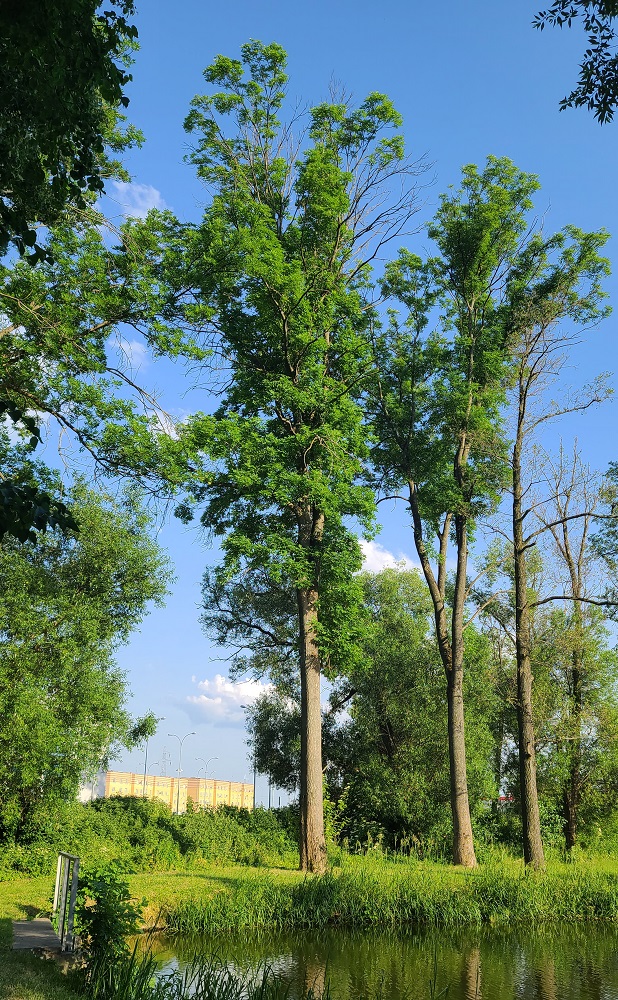
In Norse mythology a vast, evergreen ash tree Yggdrasil ("the steed or gallows of Odin" - Yggr + drasil) is watered by three magical springs. It serves as axis mundi, sustaining the nine worlds of the cosmos in its roots and branches. The name of a first man created by Odin and his brothers was Askr (literally "An Ash"). When Vikings invaded England they were called "ashmen" because they indeed made their spears and bows from an ash but apparently people on the British Isles did not. In Greek Iliad Achilles killed Hector with a spear made from ash wood.
After Ragnarok, the race of mankind will be restored from a man and a woman who are somehow sheltered within the world ash tree and nourished on dew. Snorri wrote: "I know an ash-tree known as Yggdrasil a tall tree and sacred besprent with white clay, thence come the dews that fall on the dales, it stands ever green over Urð's spring." and Snorri comments "The dew which falls from it to the earth is called honey-dew by the men and the bees feed on it".
In Greek mythology the Meliae (from Hesiod's Theogony, the word "meliai" means "ash trees") are nymphs associated with the ash and perhaps specifically with the manna ash (Fraxinus ornus). The dryads were nymphs associated with an oak. Hesychius in his lexicon contains this entry: "melías karpós: tò anthrópon génos" meaning "seed of ash: the race of men". The Flora Europaea lists four species of Fraxinus native to Europe including Fraxinus ornus and Fraxinus excelsior, which are producing manna. Fraxinus excelsior is the only species which grows in Northern Europe and must have been the model for the world ash Yggdrasil. It grows only as far South as what the ancients called Macedonia. However Fraxinus ornus is widespread in Greece and the two remaining European species of ash are found there also.
It most probably was not the Yamnaya influence and this ash-dew gathering would rather be a Forest-Steppe R1a culture that lived closer to the Finno-Ugric people, who also kept those ash tree related myths.
The Slavs believed that an ash tree reaches to heaven and its roots reach to the underworld. Its bark juice was used to treat snake bites. That tree is also connected to the Slavic Thunder God. Slavs also made bows and arrows from an ash tree. It is the tallest non-evergrean tree in Poland (up to 45 m in the Białowieża Forest). From the importance of an oak tree one could assume that it would be the tallest tree species in Europe but instead it is an ash tree and ancient Europeans knew that very well.
That is why in the Polish language a name for that tallest tree could come from the Polish (Lechitic West Slavic but not East Slavic) Thunder God or Sky Father named: "Yesha" - "Yesa" - "Yassa" - "Jassa" - "Jesza". An ash in the Old Polish language was called "jasień" and nowadays it is called "jesion" ("The Jessa's tree"). In general it was also a tree commonly used as a protection against lizards, serpents and snakes. Those evil serpents could be connected to a dragon called Niddhoggr, who chewed the roots of Yggdrasil in the Underworld (Hel) and a similar evil serpent appeares in Slavic myths.
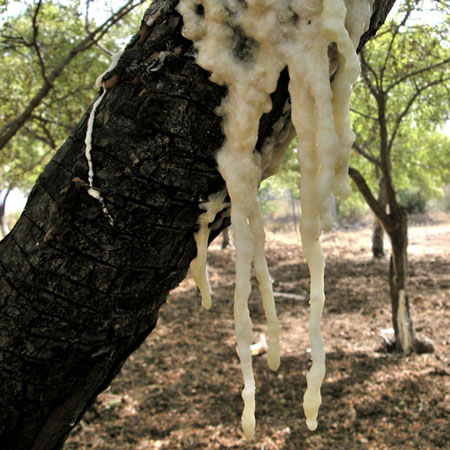
In Celtic religion a god called "Esus" might be connected to Slavic "Yesha" (Włodzimierz Szafrański also emphasizes this theory). Esus was always portrayed next to a tree with leaves similar to those of an ash. Together with oak and thorn, an ash is part of a magical trinity in the Irish fairy lore. The Proto-Celtic for "ash" was "*onnos", in Old Irish "nin", in Irish "fuinseog", in Manx "unjin", in Welsh "onnen", in Cornish "onnen" and "onnenn" in Breton. It is quite possible that Slavic "jesion" could come from a junction of "Yeshi" + "onnos" and mean "An ash of Yesha". The modern P-Celtic languages would suggest a similar reconstructed name in P-Celtic Gaulish lanugage, which used to be much closer to West Slavs geographically and maybe connected genetically and linguistically through the Unetice Culture that flourished in the territory of Western Poland.
In the Baltic Latvian language this god's name appears as Jeusenš, Jeuseņ, Ūsiņš. Folk songs expressed a visible merging process of Ūsiņš and Jurģi (Saint George). In Hindu mythology there is a god "Shukra" and his name means "bright" or "clear". Shukra is also used as the name of an ancient lineage of sages who counselled Asuras in Vedic history.
The world tree for Indo-Europeans was a mead (honey) tree that rained celestial honey on the world. The secretion of fermentable honey by the ash tree gave the Indo-Europeans good reason for their particular attention to that tree, and for their apparent belief that it was the nurse of gods and men. The honey in its perfect and original form which flowed through the tree provided the food of the gods. Indra is celebrated for drinking great pools of soma, Odin eats no food and drinks only wine and the nectar and ambrosia of the Olympian gods is often compared to honey. Therefore just as the world ash physically linked gods and men, its fermented resins could provide communion between gods and men.
In France and Belgium there is a beverage called Frênette made from the leaves and manna (honey from the bark) of an ash tree. Clearly that tree was also important in the Gaulish (Celtic) religion.
Aesir Gods
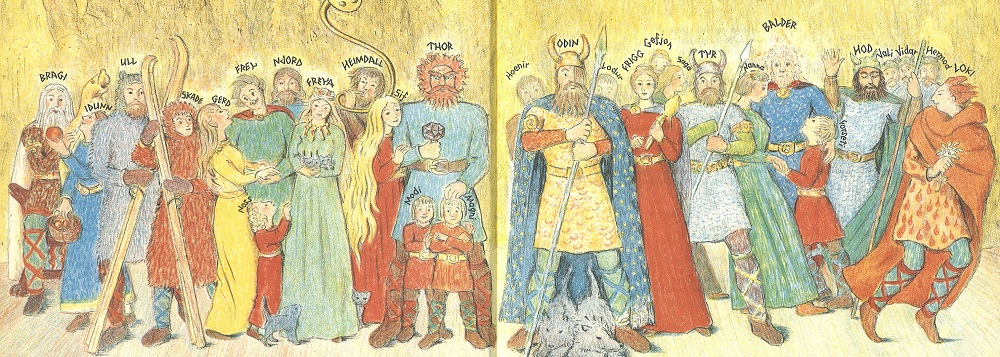
Odin (Wodan) was a father of all the Aesir Gods. His brothers Vili (Will) and Ve (Holy Faith) do not have any offspring except for the first humans Ask (Ash Tree) and Embla. Odin together with Earth (Fjorgyn) gave life to Thor. This could come from an observation that the Storm (Odin) only creates lightning and thunder when it touches the Earth.
Aesir (Aiser) is a plural form of "Áss" and "Oss", both meaning "God". That compound is also present in the name of Oslo, meaning "location of Oss" and in the name Asgarðr (Asgard) meaning "Fortress of the Gods". Áss is attested in other Germanic languages such as Old English "ōs" (plural ēse), denoting a deity in Anglo-Saxon paganism, preserved only as a prefix Ōs- in personal names like Osborne, Oswald and some place-names.
Word "Áss" is cognate to Avestan "aŋhū" meaning "lord, lifetime" and "ahura" meaning "godhood", Sanskrit "ásu" meaning "life force" and "असुर (ásura)" meaning "godlike", "powerful", "cloud", "spirit" but also "demons". In Hittite "𒈗𒍑 (ḫa-aš-šu-uš, ḫaššuš)" means "king". In Uralic languages there are similar words, such as Erzya "азоро (azoro)", Moksha "азор (azor)", Komi-Zyrian "озыр (ozyr)", Udmurt "узыр (uzyr)", all those Uralic words mean "lord" or "rich". In Spanish "azor" means "goshawk bird" and in Slavic languages
It means that this word was brought to Scandinavia together with R1a-Z284 Indo-European speakers from the Corded Ware Culture around 2800 BC. If that word would be "ansuz" in Proto-Germanic, then other cognates might include Polish "jaśnie pan" both in "jaś" ("Bright One") and "pan" ("Lord"). Odin ("The Ass") shares many similarities with Rig Vedic god Rudra (Shiva).
In the earliest layer of Vedic texts Agni, Indra and other gods are called Asuras, in the sense of their being "lords" of their respective domains, knowledge and abilities. In later Vedic and post-Vedic texts, the good gods are called Devas, while bad Asuras compete against these Devas and are considered "enemy of the gods". Bhargava gives a count of the word use for every Vedic deity: Asura is used as an adjective meaning "powerful" or "mighty". In the Rig Veda, two generous kings as well as some priests have been described as asuras. One hymn requests a son who is an asura. In nine hymns, Indra is described as asura. He is said to possess asurya 5 times, and once he is said to possess asuratva. Agni has total of 12 asura descriptions, Varuna has 10, Mitra has 8, and Rudra has 6.
Another thing worth notice is that the Aesir gods rode horses while the Vanir did not. It is further proved by the 9th century Merseburg Charms. The Goddess Gna (in Polish "gna" means "she rides swiftly", from Slavic "gŭnati") had a horse Hófvarpnir that could fly like Pegasus. Frigg sends her off to different worlds to run errands.
Snorri writes about their horses in a stanza in his Gylfaginning: "Each day the Æsir ride thither up over Bifröst, which is also called the Æsir's Bridge. These are the names of the Æsir's steeds: Sleipnir (Slipper) is best, which Odin has; he has eight feet. The second is Gladr (Bright), the third Gyllir (Golden), the fourth Glenr (Clear), the fifth Skeidbrimir (Snorter), the sixth Silfrintoppr (Silver-Tuft), the seventh Sinir (Sinewy), the eighth Gisl (Beam), the ninth Falhófnir (Hairy-Hoof), the tenth Gulltoppr (Gold-Tuft), the eleventh Léttfeti (Light-Foot). Baldr's horse was burnt with him; and Thor walks to the counsel".
The "A" rune ᚫ (ansuz) was probably named after the Æsir. The name in this sense survives only in the Icelandic Rune Poem as Óss, referring to Óðinn, who is identified with Jupiter: "Óss is Aged Gautr / and prince of Asgard / and lord of Valhalla / chieftain Jupiter." The name of "A" (the letter 𐌰) in the Gothic alphabet is ahsa.
Horses
The Bronze Age petroglyphs from Kivik, Villfara, Sagaholm and Franarp portray horses and chariots. The oldest horse equipment found in the Nordic countries, together with women's jewelry, was found in a women's grave in Gotland from around 500 BC. It consists of early equipments for two pairs of horses. The horses have been used there as carriers of wagons.
There were found horse-headed belt hooks from around 1600 BC to 1400 BC. Later ones did carry a spiral-decorated sundisc on the horse's back (after Aner & Kersten 1973: nos. 364, 451 taf. 75, 95). Other finds are for example antler cheek pieces from Østrup in Denmark[7], goads from Strandtved and Buddinge, horse-headed belt hooks from Kirke Værløse and Abekas in Denmark (1600 BC), twin horse figurines from Tagaborg, horse-head handled razors from Abekas.
Paleogenetic evidence from genetic loci associated with coat color in horses argues for a diversification of coat color starting in the Bronze Age and is considered to be associated with an early stage of the domestication process. Because the appearance of new coat colors is common in domestic taxa compared to their wild counterparts, they provide a useful marker for identifying domestic horses in archaeological assemblages[8]. This also points to 1700 BC as the earliest possible date for the myth about Aesir horses' different coat colors. Egyptian art from around 1350 BC already portray brown, white and black horses[9][10].
Tollense Battle
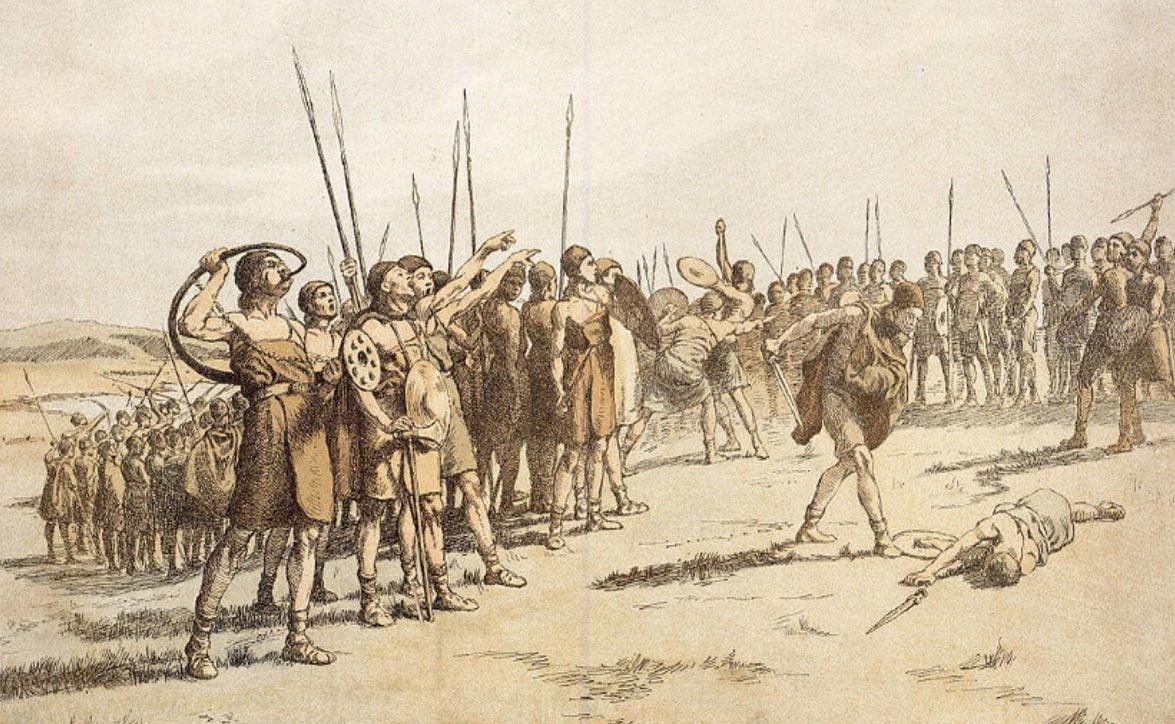
As of late 2017, the remains of some 140 men had been identified. Most of these were young men between the ages of 20 and 40, but there were also at least two women identified among 14 skeletons that were genetically tested. The total number of dead is estimated between 750 to more than 1000. The total number of fighters might have ranged between 3000 and more than 5000, assuming a casualty rate of 20-25%. In one spot, 1478 bones were found within just 12 m² (130 sq ft), potentially the remnants of a pile of corpses or a final pocket of resistance.
Radiocarbon dating indicates a timeframe between 1300 BC and 1200 BC, the times of Nordic Bronze Age and Lusatian Culture. As no clear traces of healing have been found on any of the wounds, the whole encounter seems to have taken place in not much more than a day. A quarter of skeletons "show signs of healed traumas from earlier fights, including three skulls with healed fractures". It means that many trained and experienced warriors seem to have taken part in the battle.
In the Bronze Age, the landscape of Northern Europe was relatively open, human influence was small as the population density at that time is estimated to have been only 3 to 5 people per square km. The area was devoid of towns or even small villages, archaeologists believe that the inhabitants lived with their extended families on individual farmsteads. The closest known large settlement to the site of the battle at the time was more than 350 kilometers away. In 2013, geomagnetic surveys revealed evidence of a 120 m (390 ft) long bridge or causeway stretching across the valley. Excavated over two dig seasons, the submerged structure turned out to be made of wooden posts and stone. Radiocarbon dating showed that although much of the structure predated the battle by more than 500 years, parts of it may have been built or restored around the time of the battle, suggesting the causeway might have been in continuous use for centuries and a well-known landmark.
Spears, clubs, swords, knives, sickles and arrows were used during the battle. Many of the skulls (of which over 40 were found) show signs of battle wounds, with a bronze arrowhead found in one of them. By late 2017, about 50 bronze arrowheads had been found. Remnants of the arrows' wooden shafts provided a further possibility for dating with more than a third dating to the same time as the bones. Contrasting these arrowheads with others made from flint and with wooden clubs, it has been surmised that two differently equipped groups confronted each other.
No swords have been found so far, but bones show cutting traces typical for this type of weapon. Some combatants rode into battle as evidenced by horse bones of at least five horses found on site. The original arrowhead's position in the initially found humerus bone shows that an archer on foot wounded a horseman. Standardized metal weaponry was found intermingled with horse bones. These findings have led archaeologists to conclude that an officer class consisting of Bronze-wielding mounted warriors presided over the regular soldiers with simpler weaponry.
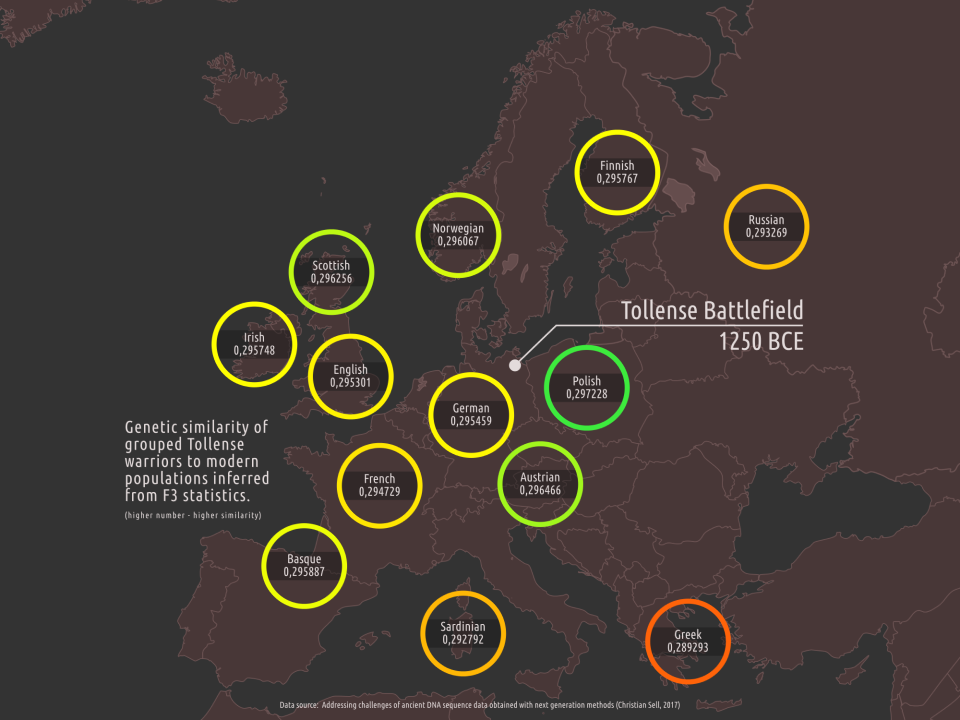
The map above (created by mapnik) shows the genetic similarity of grouped Tollense warriors to modern populations inferred from F3 statistics. The closest match is the population of modern day Poland (0.2972), which formerly formed the Lusatian Culture, on the second place is the population of Norway (0.2960) representing the Nordic Bronze Age, Germany got a score lower than Finland (0.2957) but Austria matched quite high (0.2964), which would suggest that warriors of pre-Hallstatt Culture took part in the Tollense Battle maybe as mercenaries.
A group of 5000 combatants implies that they had been gathered, organised, fed, briefed, and led into battle. According to the researchers at the site, this would have been an astounding feat for the time. This would mean that socio-political development in Central Europe was more advanced and more warlike than previously assumed, roughly at a time when Egypt and the Hittites concluded their famous peace treaty. The well-preserved bones and artifacts add detail to this picture of Bronze Age sophistication, pointing to the existence of a trained warrior class and suggesting that people from across Europe joined the bloody fray.
The Aesir-Vanir war
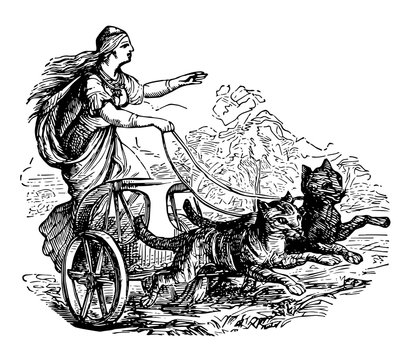
Gullveig ("gold greed", "lust for gold") was one of the goddesses of the Vanir. Gullveig was considered a pioneer of alchemy and magic, as well as a symbolic figure. Gullveig, who was beautiful and shiny like gold itself, aroused their lust for gold and they began to fight among themselves. Then the gods of the Aesir tried to burn her three times, but each time Gullveig only became more and more radiant - a reference to the alchemical process of quenching gold. She was also called Heid (a Witch). Lindow notes that "since Ynglinga saga says that Freyja first brought seidr magic to the Aesir, it is not impossible that Gullveig is Freyja, and that she brought seidr to the Aesir in the first instance either as a strategy in the war, or that her bringing of seidr started the war". Orchard further mentions that Freyja, like Gullveig, is associated with gold and with the form of magic known as seidr.
In chapter 4 of Heimskringla, Snorri presents an euhemerized account of the Æsir–Vanir War. The account says that Óðinn led a great army from Asgard to attack the people of Vanaheim. However, according to Snorri, the people of Vanaheim were well prepared for the invasion and they defended their land very well. Both sides produced immense damage and ravaged the lands of one another (this account fits the Tollense Battle or Corded Ware Culture invasion very well). They eventually got tired of war and agreed to meet to establish a truce.
After doing so, they exchanged hostages. Vanaheim is described as having sent to Asgard its best men: Njörðr (described as wealthy) and his son Freyr in exchange for Asgard's Hœnir, described as large, handsome, and thought of by the people of Vanaheim well suited to be a chieftain, together with Mímir ("The Thinker", "The Rememberer"; his name is an Indo-European cognate for the words "thought", "think", "remember").
Upon arrival in Vanaheim, Hœnir was immediately made chief and Mímir often gave him good counsel. However, whenever Hœnir appeared without Mimir at assemblies or meetings where the Vanir asked him his opinion on difficult issues, his response was "let others decide". The Vanir suspected that they had been cheated by the Æsir in the hostage exchange. They grabbed Mímir and cut off his head and sent it to the Æsir.
Óðinn took the head of Mímir, embalmed it with herbs so that it would not rot and spoke charms over it, which gave it the power to speak to him and reveal his secrets. Óðinn then appointed Njörðr and Freyr to be priests of sacrificial customs and they became Diar (Gods) of the people of Asgard. Freyja, described as daughter of Njörðr, was the priestess of these sacrifices. She is also described as introducing seiðr to Asgard.
In Sanskrit there is a cognate to her name "priya" and it means "dear, beloved". Other cognates are Gothic "frijôn" meaning "to love", Anglo-Saxon "freogan", German "Freund" meaning "friend". In Old High German there is a verb "frijôn" meaning "to take a wife" and contrasts with German "freien" meaning "liberate, to set free". Frey could then also mean "A Free Man" and Ingvi would be his proper name. There are also the following Slavic cognate words: Slovenian "prijatelj", Old Polish "prijaciel", Serbo-Croatian "prijatelju". Following the Grimm's Law those words would turn to "frija" + "-tel" in Proto-Germanic. Those forms are absent in Eastern Slavic languages, where they use "drug, druh" to denote a friend, similar to Baltic "draugas" in Lithuanian. This would put Freya in a similar position to Roman Venus and Greek Aphrodite.
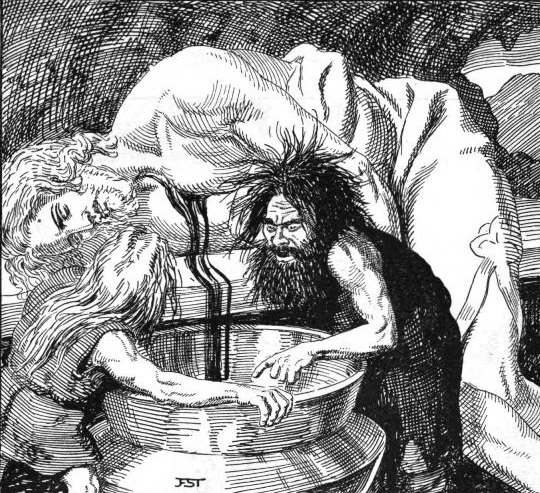
After the Æsir-Vanir War and before the exchange of hostages, the gods sealed a truce they had just concluded by spitting in a vat. From this spittle in a vat, Kvasir was created and kept as a symbol of that peace treaty. Kvasir (Kvaser) was so wise that there were no questions he could not answer. He travelled around the world to give his knowledge to mankind. One day, he visited the dwarves Fjalar and Galar. They killed him and poured his blood into two vats and a pot called Boðn, Són and Óðrerir. They mixed his blood with honey, thus creating a mead which made anybody who drank it a "poet or scholar" ("skáld eða frœðamaðr"). The dwarves explained to the gods that Kvasir had suffocated in intelligence.
Snorri's description is further proven faithful by way of the 10th century skaldic kenning "Kvasir's blood" ("Kvasis dreya" in Old Norse). Strong parallels exist between the Old Norse tale of the theft of the Mead of Poetry by Odin in the form of an eagle and the Rig Vedic tale in Sanskrit of the theft of Soma (beverage of the gods) by the god Indra or an eagle's son Suparna (in Lithuanian "sparnas" means "wing"). These parallels point to a common Indo-European basis. Mixing of spit in a vat between two groups of gods points to an ancient basis for the myth. The customs of mixing spittle and the group drinking the intoxicating beverage are well rooted in traditional peacemaking and group binding customs among various ancient peoples.
Kvass is a famous drink in Slavic countries but the word itself also means "acid" or rather "something sour". In Polish there is a word "kwaśny" denoting such "sourness", other Slavic languages use a word similar to Russian "ки́слый (kíslyj)" and "kisiały" in Old Polish.
Noatun in Vanaheim
While Njordr lived with the Vanir he had his sister as a wife because that was the custom among them. Their children were Frey and Freya. The palace of Njordr called Noatun used to lay in the land of the Vanir. The meaning of this palace's name in Old Norse is "ship-enclosure", from "noa" + "tun". It is described in the Prose Edda book Gylfaginning as located "in heaven". In Lithuanian language there is a word "novis" meaning death. The connection of the sea, water and ships with death is described in detail in the linked death word article. It would be of importance to mention here the Sanskrit word "वन (vána)" meaning all the following: a forest, wood, grove, thicket, timber, a wooden vessel or barrel, plenty, abundance, a cloud (as the vessel in the sky), the body of a carriage, water, a fountain, spring, abode, longing, earnest desire. One of the names used for a pig is "Van-child".
A history of European pigs' DNA appears helpful in this case because it shows that the original pigs brought into Europe from the Near East by the Anatolian Farmers around 6000 BC were being repeatedly replaced with local European wild boars from the forest and around 3000 BC European pig's DNA contained only 4% of the original Near Eastern DNA[9]. The true name of the Vanir would then be "The people of the forest" and "Van-child" would be "the Forest-child", describing the place of origin of modern domesticated pigs.
Heimskringla reports a tale involving king Sveigðir's visit to Vanaland (located in Sweden), where he meets a woman by the name of Vana and the two produce a child named Vanlandi (whose name means "Man from the Land of the Vanir"). The Historia Norwegiæ presents a Latin summary of Ynglingatal, older than Snorri's quotation: "He [Swegthir] sired Wanlande, who died in his sleep, suffocated by a goblin, one of the demonic species known in Norwegian as mara. He was a father of Visbur...". After his death Vanlandi (son of Sveigðir) was burned by the river Skúta (Skytaa, Skutån) meaning "Shooting Creek". It is interesting that this name sounds exactly the same as "Scythian (Skutian)" and maybe it was the Northern European exonym denoting their shooting skills and usage of bows as their main military tactic, "Scythians" would then simply mean "Shooters".
In the Íslendingabók (written in the early 12th century by the Icelandic priest Ari Þorgilsson) Yngvi Tyrkja konungr ("Yngvi king of Turkey") appears as the father of Njörðr who in turn is the father of Yngvi-Freyr, the ancestor of the Ynglings. According to the Skjöldunga saga (a lost epic from 1180 AD – 1200 AD, saved only partially in other sagas) Odin came from Asia and conquered Northern Europe. He gave Sweden to his son Yngvi and Denmark to his son Skjöldr. Since then the kings of Sweden were called Ynglings and those of Denmark Skjöldungs.
The conclusion can be made that the Vanir gods were somehow connected to the Early European Farmers of Globular Amphora Culture (if they already back then produced fermented wheat or barley called kvass or ale) and when the Northern Forest-Steppe Yamnaya (R1a-Z283) went West the Aesir-Vanir War myth could be born. There is also a possibility that it was coined after the Corded Ware Culture warriors invaded the Funnelbeaker Culture in Scandinavia (again Early European Farmer and Hunther-Gatherer societies against the Indo-European warriors-koryos).
The third possibility is that the invading Unetice Culture represented already Indo-European Vanir Gods. There are many golden objects in their culture and maybe those would be the Veneti when they also went back towards East to form the Lusatian Culture from their mixture with Trzciniec Culture in Poland, Czechia and Slovakia. Then the Aesir Gods (R1a-Z284) had to defend their settlements from the Unetice Culture warriors invading Scandinavia circa 2200 BC - 1700 BC. In general it is very difficult to point to an exact event in history or archaeology that inspired the Aesir-Vanir War myth but it is very probable that it was in existence already in the times of the Nordic Bronze Age Culture.
The giant Jotuns in the Out-Fortress
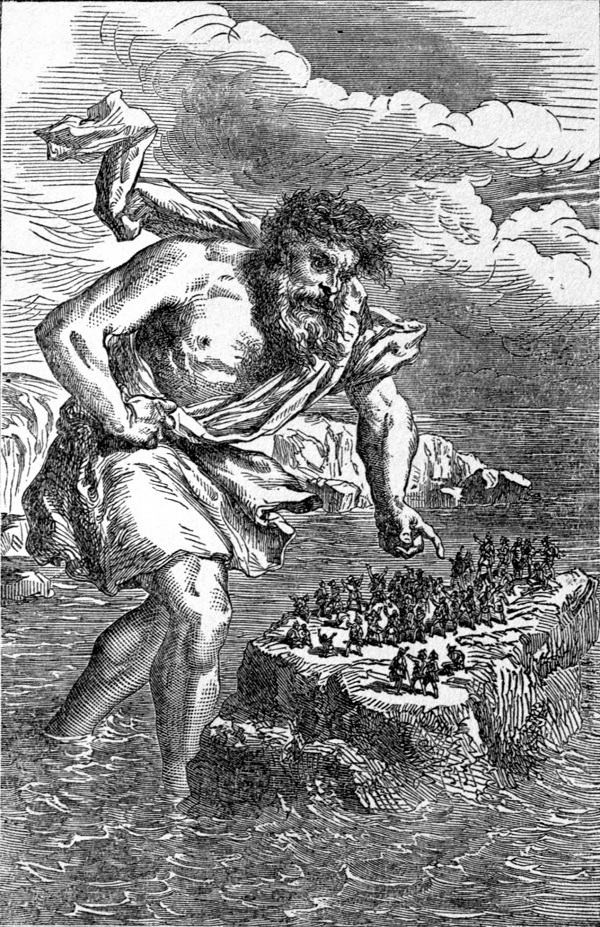
A mother of Odin, Vili and Ve was a giantess called Bestla and she was a wife of Borr ("Born", son of Buri created by Auðumbla). Since Odin is descended from the giants (jötnar) on his mother's side, the slaying of Ymir by him and his brothers could be seen as an intra-familial killing. In the religion of the Kalash people Imra (short for Yama Raja, Yamraj, Ymra) is the ancestor "Creator" god. According to the Kalasha, Imra formed the Earth. Kalash people appear to be closest genetically to the Indo-Aryans and carry 60% of Steppe related Yamnaya ancestry in their DNA but this Steppe ancestry is literally just a mixture of Eastern European Hunter-Gatherers (including Western European Hunter-Gatherers and Ancient North Eurasians) with Caucasian Hunter-Gatherers and Early European Farmers, so it is impossible to tell in which group of those Hunter-Gatherers the myth of Ymir has its roots.
Mimir was also an Aesir but he originated as a giant and most probably he was an uncle of Odin. A father of Bestla and Mimir was called Bölþorn ("Evil-thorn"), in Slavic "bol" means "pain".
Toponyms such as Skedevi in Sweden suggests that despite being a jötunn, Skaði was worshipped in Old Norse religion. Furthermore, various well-attested deities, such as Odin and Thor, are descendants of the jötnar. This supports the idea that the distinction between gods and jötnar is not clearly defined and they should be seen as different cultures or peoples rather than different types of being.
Norse myth traces the origin of the jötnar to the proto-being Ymir, a result of growth or sexless reproduction from that entity's body. Ymir is later killed, his body is dismembered to create the world, and the jötnar survive this event by way of sailing through a flood of Ymir's blood. The drowning of the jötnar in a flood is further pictured on the hilt of the sword used by Beowulf to slay Grendel's mother. In later Scandinavian folklore, the ambiguity surrounding the entities gives way to negative portrayals. Belief in jötnar (ettins) also survived in English folklore.
In the Prose Edda there is a story about Utgard (The realm of giants). In the end Útgarða-Loki reveals that Loki had actually competed against wildfire itself called Logi (Old Norse for "flame"), Þjálfi had raced against thought - Hugi (Old Norse for "thought"), Thor's drinking horn had actually reached to the ocean and with his drinks he lowered the ocean level (resulting in tides). The cat that Thor attempted to lift was in actuality the world serpent Jörmungandr, and everyone was terrified when Thor was able to lift the paw of this "cat", for Thor had actually held the great serpent up to the sky. The old woman Thor wrestled was in fact Old Age - Elli (Old Norse for "old age"), and there is no one whom old age cannot bring down. Útgarða-Loki concludes by telling Thor that it would be better for "both sides" if they did not meet again. Upon hearing this, Thor takes hold of his hammer and swings it at Útgarða-Loki but he is gone and so is his castle. Only a wide landscape remains.
Basque Jentils and Hunter-Gatherers
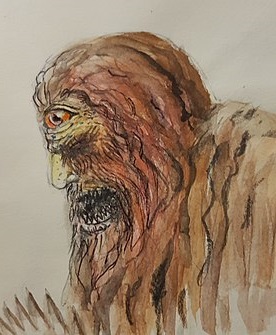
The jentil are a race of giants in the Basque mythology. This word meaning gentile, from Latin gentilis ("clansman, tribesman, family") was used to refer to pre-Christian civilizations and in particular to the builders of megalithic monuments. The jentil were believed to have lived alongside the Basque people. They were hairy and so tall that they could walk in the sea and throw rocks from one mountain to another. This stone throwing has led to several tales and explanations for ancient stone buildings and large isolated rocks. Even the Basque ball game, pilota, is ascribed to these stone-throwers. The tradition lives on in the Basque power games of stone lifting and throwing.
Some attributed to the jentil the defeat of Roland in the Battle of Roncevaux, where the Basques defeated the Frankish army by throwing rocks on them. They also were said to have invented metallurgy and the saw and first grew wheat, teaching humans to farm. However, they were unwilling to move to the valleys from the mountains, with a certain unwillingness to progress. They disappeared into the earth under a dolmen in the Arratzaren valley in Navarra when a portentous luminous cloud – perhaps a star – appeared, said to have heralded the birth of Christ (Kixmi) and the end of the jentil age. Other stories say jentil threw themselves from a mountain. Only Olentzero remained, a giant who appears at Christmas and is reproduced as straw dolls. Similarly in Norse mythology the giants lived in Útgarðar ("Out-Fortress") that was placed in the roots of Yggdrasil far away from Asgard.
A study in PNAS journal suggests that Basques descend from Anatolian Farmers who mixed with local Western European Hunter-Gatherers before becoming isolated for millennia. While the genomes of French and Spanish individuals showed evidence of the Eastern Yamnaya Steppe Herder genetic input, those of Basques did not. A small amount of North African and Sub-Saharan ancestry can be detected in the Spanish (from after the Muslim conquest of Iberia) but it is largely absent in the Basques. Thanks to this genetic study we can narrow down the origin of the giants (jotuns) myth to the populations of the Western European Hunter-Gatherers and Early European Farmers.
The proportion of Hunter-Gatherer ancestry varies across Europe, peaking at about 30% in Estonians and Lithuanians, but no "pure" indigenous Europeans remain. They appear to have been assimilated by the Neolithic migrants (EEF). The Sardinians also became isolated after the agricultural transition, but they lack the additional Hunter-Gatherer ancestry that characterises the Basques. In Sardinia there are so called "domus de janas" (houses of fairies), the ancient tombs carved into rock from pre-Nuragic times before the Bronze Age.
The haplogroup R1b can be found most frequently in the Basque Country (91%), Wales (89%) and Ireland (81%). The age of subclade which Basques carry, Haplogroup R1b-DF27, is estimated at 4200 years ago (2200 BC), at the transition between the Neolithic and the Bronze Age, when the Y chromosome landscape of Western Europe was thoroughly remodeled. In spite of its high frequency in Basques, Y-STR internal diversity of R1b-DF27 is lower there, and results in more recent age estimates, implying it was brought to the region from elsewhere. The distribution of R1b-DF27 covers the distribution of the Atlantic Bronze Age Culture and the Bell Beaker Culture.
The Basque R1b is the descendant of R1b-M269 (R1b1a1b), which was found to be common among the Yamnaya population. It could mean that around 2800 BC males from the Bell Beaker Culture or 1000 BC Celtic males were taken to the Basque community and their children spoke the Hunther-Gatherer or European Farmer Basque language instead of a Centum dialect of the Indo-European language.
Orko is a Thunder God in ancient Basque mythology. His name is derived from Orkeguna, the Basque word for Thursday. This could explain the origin of another name for Thor "Öku-Þor" or even the name of a Finnish Sky and Thunder God "Ukko". All three having their origin in the vocabulary of original European Hunther-Gatherer population. Eastern European Hunther-Gatherers or Ancient North Eurasians might have used a similar word "Porkon", "Perkon" that later trasnformed to Indo-European "Perkwunos".
Other European Giants
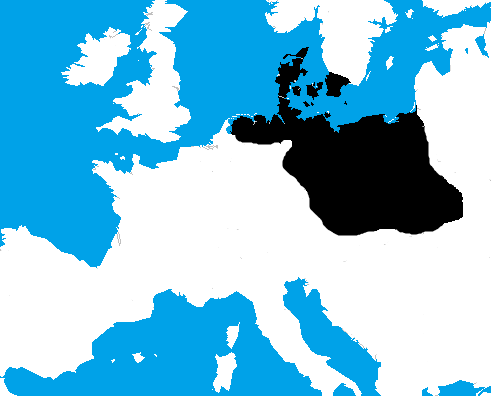
In a similar manner the Titans could be connected to the pre-Indo-Europan Minoan Civilization in Greece that originated from the mixture of European Hunter-Gatheres and Anatolian Farmers around 7000 BC and remained unchanged until the Mycenaean invasion after 2000 BC[11].
In Estonia a giant called Suur Tõll was believed to reside in the Saaremaa island. He lived in the Tõlluste village with his wife Piret. He threw huge stones everywhere, mainly targeting his arch enemy Vanatühi or other people hostile to Saaremaa. He was a king of this island, but he lived like an ordinary farmer. He often visited his brother Leiger, who lived on the neighboring Hiuma island. This giant was so tall that it took him only one step to reach the other island (5 km apart). He had a cane made of a spruce tree trunk. He was kind and ready to help, but he could be very quick-tempered. He loved eating cabbage, drinking beer and visiting the sauna.
Farming and animal husbandry along with monumental burial, polished flint axes and decorated pottery, arrived from Central Europe to Scandinavia with the Funnelbeaker Culture circa 4000 BC. Within a century or two, all of Denmark and the Southern third of Sweden became neolithised and much of the area became dotted with megalithic tombs. Farmers were capable of rearing calves to collect milk from cows all year round. The people of the country's Northern two thirds retained an essentially Mesolithic (Hunter-Gatherer) lifestyle into the first millennium BC.
Around 2800 BC the Funnelbeaker Culture gave way to the Corded Ware Culture. The Corded Ware and Pitted Ware people then coexisted as distinct archaeological entities until 2400 BC, when they merged into a fairly homogeneous Late Neolithic Battle Axe Culture. This culture produced the finest flintwork in Scandinavian prehistory and the last megalithic tombs.
In 2015 Malmström et al. found that the people of the Funnelbeaker Culture of Southern Scandinavia were largely of Early European Farmer (EEF) descent, with slight Hunter-Gatherer admixture, suggesting that the emergence of the Neolithic in Scandinavia was a result of human migration from the South. The Funnelbeakers were found to be genetically highly different from people of the neighboring Hunter-Gatherer Pitted Ware Culture, the latter carried no EEF admixture and were instead genetically similar to other European Hunter-Gatherers (mixture of Western and Eastern Hunter-Gatherers named Scandinavian Hunter-Gatherer). It was found that the Y-DNA of Early European Farmers was typically haplogroup G2a.
In conclusion Jotnar (Jotuns) clearly originate in the belief system of the Scandinavian Hunther-Gatherer population marked with Y-DNA haplogroup I1a or Early European Farmer population of the Funnelbeaker Culture marked with Y-DNA haplogroup G2a. The Vanir could represent the invading Indo-European R1b and R1a-L664 Unetice Culture Gods or Early European Farmer G2a Gods that the R1a-Z284 Indo-European "Aesir people" from the Corded Ware Culture met in Scandinavia around 2800 BC.
If Jotuns represented the unpredictable forces of nature in Norse mythology then Loki would fit that account very well. The Aesir would represent the human forces of intellect (the runes, a new Indo-European language and poetry) but also the Yamnaya horse-riding skills. The Vanir would then represent the Early European Farmer population gods connected to the Divine Goddess (Freya, similar to Phoenician Asherah) and agriculture (Nerthus, Mother Earth) but also ships and trading (Njordr). The aspect connecting all those cultures was the belief in a smiliar Thunder God.
Article created between the 30th of May 2021 and 3rd of July 2021.

